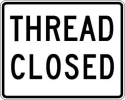Let's start with that sentence, where you have mish-mashed some terms together.All you need is a 107.31 and 107.33 waiver.
To petition the FAA for a "waiver", you would need to present a convincing case as to why the FAA should waive the requirements of 107.31 just for you personally. You would need to demonstrate to them how you can safely conduct a 4mile BVLOS flight without the pilot being "able to see" the drone.
14 CFR 107.31(a) says, "With vision that is unaided by any device other than corrective lenses, [#1] the remote pilot in command, [#2] the visual observer (if one is used), and [#3] the person manipulating the flight control of the small unmanned aircraft system must be able to see the unmanned aircraft throughout the entire flight in order to:[...]"
Interpretation: All three people must be able to see the drone during the entire flight. If you, the pilot, cannot see the drone 4 miles away, there's no point in reading any further. Bzzzzzzt, you've already failed to meet this first requirement. Unless your name is Amazon or Walmart, it's extremely unlikely that the FAA would ever consider waiving this requirement just for you.
Note, it doesn't require all three people to be looking at the drone all the time. So far, it only says all three must be able to see it. That bit is then further clarified in 14 CFR 107.31(b), which says, "Throughout the entire flight of the small unmanned aircraft, the ability described in paragraph (a) of this section must be exercised by either:
(1) The remote pilot in command and the person manipulating the flight controls of the small unmanned aircraft system; or
(2) A visual observer."
Interpretation: Only one (1) or the other (2) is required to actually have eyes on the drone at any moment. But that doesn't negate the requirement in (a) that everyone must be able to see the drone at all times.













